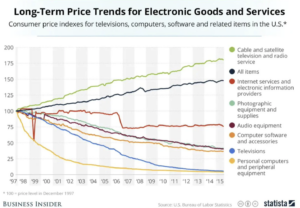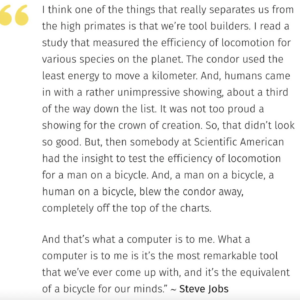A few common ways new technologies can be misunderstood
1/ New technologies often arrive with flaws: toy-like, expensive, janky, lacking clear applications, etc.
To predict how they’ll develop, it’s important to dig deeper. Here are a few common ways new technologies can be misunderstood.
2/ “It’s just a toy.”
This was the mistake made early on about breakthrough technologies like the telephone, personal computers, and social media.
3/ When the telephone was first invented, incumbents like Western Union dismissed it, as the sound quality was poor and it only worked at short distances. They failed to imagine how quickly those things would be improved.
4/ Early on, blogs and services like Twitter were mostly used to discuss niche tech topics and share mundane personal details. A lot of people dismissed them as toys or passing fads. Today billions of people rely on social media as their primary news source.
5/ Social media was a technology for creating global media networks that arrived disguised as a way to share what you had for lunch.
6/ “It’s too expensive.”
We hear this today about electric vehicles, space travel, virtual reality headsets, and more. Hardware almost always starts out expensive. Over time, the costs drop rapidly as manufacturing know-how and economies of scale kick in.

7/ In addition to getting cheaper, hardware gets better. A modern iPhone has over 12 billion transistors, roughly 3500 times more than a 1995 Pentium PC. Today over 80% of adults worldwide have internet-connected supercomputers, aka smartphones, in their pockets.

8/ Sequencing a human genome went from costing $100 million twenty years ago to under $1,000 today, making it broadly accessible. As Larry Page said: “Hardware prices eventually approach the cost of the commodity material inputs.”

9/ “What problem does it solve?”
Many breakthrough technologies, especially those involving computers, don’t directly solve problems. Instead, they unlock new capabilities, which in turn enable users, developers, creators to solve problems.
10/ Early on, personal computers were used mainly by enthusiasts to make games and hack around. They seemed like overpriced toys. But later, some of those early enthusiasts developed the word processor, the spreadsheet, the web browser, etc.
11/ Steve Jobs called the computer a bicycle for the mind. As the bicycle amplifies the efficiency of our locomotion, the computer amplifies our intelligence and creativity.

12/ The Web was a momentous invention, but, as Sep Kamvar said, if you asked people in 1989 what they needed to make their life better, it was unlikely that they would have said a decentralized network of information nodes that are linked using hypertext.
13/ In summary, it’s important to ask questions about new technologies that go beyond first impressions.
“Looks like a toy” → How fast will it improve?
“Too expensive”→ How fast will the price come down?
“Doesn’t solve a problem” → Does it provide new capabilities?
***
Originally published here.
***
The views expressed here are those of the individual AH Capital Management, L.L.C. (“a16z”) personnel quoted and are not the views of a16z or its affiliates. Certain information contained in here has been obtained from third-party sources, including from portfolio companies of funds managed by a16z. While taken from sources believed to be reliable, a16z has not independently verified such information and makes no representations about the current or enduring accuracy of the information or its appropriateness for a given situation. In addition, this content may include third-party advertisements; a16z has not reviewed such advertisements and does not endorse any advertising content contained therein.
This content is provided for informational purposes only, and should not be relied upon as legal, business, investment, or tax advice. You should consult your own advisers as to those matters. References to any securities or digital assets are for illustrative purposes only, and do not constitute an investment recommendation or offer to provide investment advisory services. Furthermore, this content is not directed at nor intended for use by any investors or prospective investors, and may not under any circumstances be relied upon when making a decision to invest in any fund managed by a16z. (An offering to invest in an a16z fund will be made only by the private placement memorandum, subscription agreement, and other relevant documentation of any such fund and should be read in their entirety.) Any investments or portfolio companies mentioned, referred to, or described are not representative of all investments in vehicles managed by a16z, and there can be no assurance that the investments will be profitable or that other investments made in the future will have similar characteristics or results. A list of investments made by funds managed by Andreessen Horowitz (excluding investments for which the issuer has not provided permission for a16z to disclose publicly as well as unannounced investments in publicly traded digital assets) is available at https://a16z.com/investments/.
Charts and graphs provided within are for informational purposes solely and should not be relied upon when making any investment decision. Past performance is not indicative of future results. The content speaks only as of the date indicated. Any projections, estimates, forecasts, targets, prospects, and/or opinions expressed in these materials are subject to change without notice and may differ or be contrary to opinions expressed by others. Please see https://a16z.com/disclosures for additional important information.